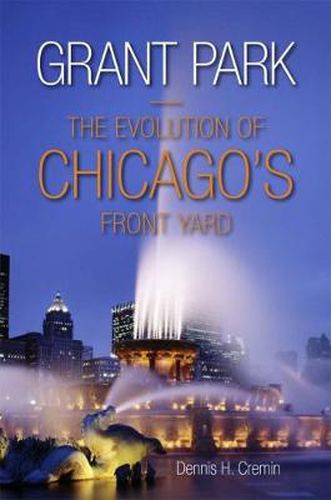Readings Newsletter
Become a Readings Member to make your shopping experience even easier.
Sign in or sign up for free!
You’re not far away from qualifying for FREE standard shipping within Australia
You’ve qualified for FREE standard shipping within Australia
The cart is loading…






On November 4, 2008, when president-elect Barack Obama celebrated his victory with more than one hundred thousand supporters in Chicago, everyone knew where to meet. Long considered the showplace and cultural center of Chicago, Grant Park has been the site of tragedy and tension, as well success and joy. In addition to serving as the staging grounds for Abraham Lincoln’s funeral procession through the city, the park has been the setting for civil rights protests and the 1968 Democratic National Convention demonstrations. The faithful attended the open-air mass of Pope John Paul II in Grant Park, and fans gathered there to cheer for the Chicago Bulls after their championship wins. The long park overlooking the beautiful waters of Lake Michigan has played an active part in Chicago and U. S. history. In 1836, only three years after Chicago was founded, Chicagoans set aside the first narrow shoreline as public ground and declared it forever open, clear, and free… . Chicago historian and author Dennis H. Cremin reveals that despite such intent, the transformation of Grant Park to the spectacular park it is more than 175 years later was a gradual process, at first fraught with a lack of funding and organization, and later challenged by erosion, the railroads, automobiles, and a continued battle between original intent and conceptions of progress. Throughout the book, Cremin shows that while Grant Park’s landscape and uses have changed throughout its rocky history, the public ground continues to serve as a display case for the city and a calling card to visitors. Amply illustrated with maps and images from throughout Chicago’s history, Grant Park shows readers how Chicago’s front yard developed into one of the finest urban parks in the country today. 2014 Illinois State Historical Society Book of the Year
$9.00 standard shipping within Australia
FREE standard shipping within Australia for orders over $100.00
Express & International shipping calculated at checkout
On November 4, 2008, when president-elect Barack Obama celebrated his victory with more than one hundred thousand supporters in Chicago, everyone knew where to meet. Long considered the showplace and cultural center of Chicago, Grant Park has been the site of tragedy and tension, as well success and joy. In addition to serving as the staging grounds for Abraham Lincoln’s funeral procession through the city, the park has been the setting for civil rights protests and the 1968 Democratic National Convention demonstrations. The faithful attended the open-air mass of Pope John Paul II in Grant Park, and fans gathered there to cheer for the Chicago Bulls after their championship wins. The long park overlooking the beautiful waters of Lake Michigan has played an active part in Chicago and U. S. history. In 1836, only three years after Chicago was founded, Chicagoans set aside the first narrow shoreline as public ground and declared it forever open, clear, and free… . Chicago historian and author Dennis H. Cremin reveals that despite such intent, the transformation of Grant Park to the spectacular park it is more than 175 years later was a gradual process, at first fraught with a lack of funding and organization, and later challenged by erosion, the railroads, automobiles, and a continued battle between original intent and conceptions of progress. Throughout the book, Cremin shows that while Grant Park’s landscape and uses have changed throughout its rocky history, the public ground continues to serve as a display case for the city and a calling card to visitors. Amply illustrated with maps and images from throughout Chicago’s history, Grant Park shows readers how Chicago’s front yard developed into one of the finest urban parks in the country today. 2014 Illinois State Historical Society Book of the Year